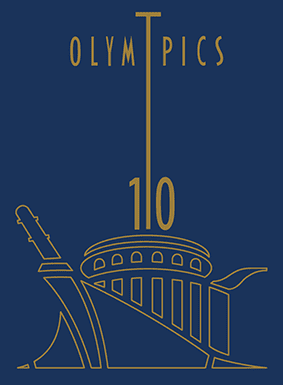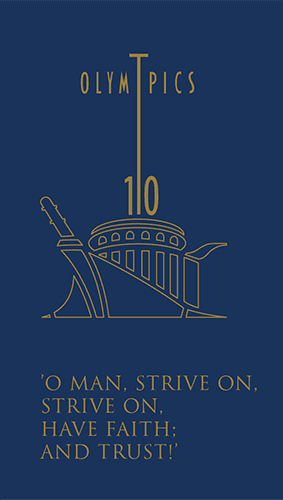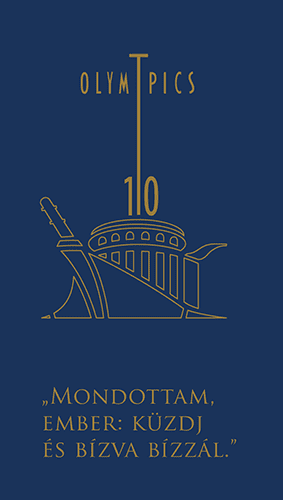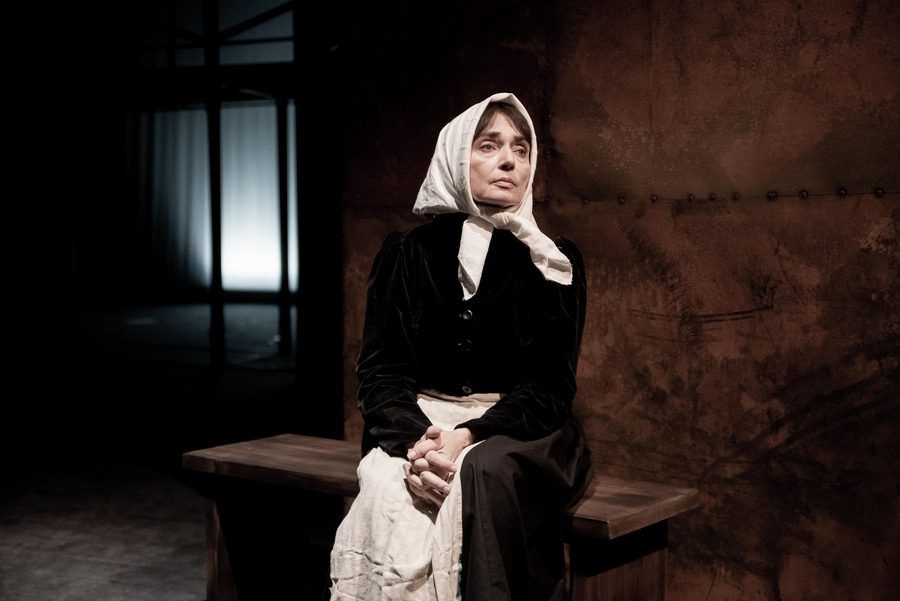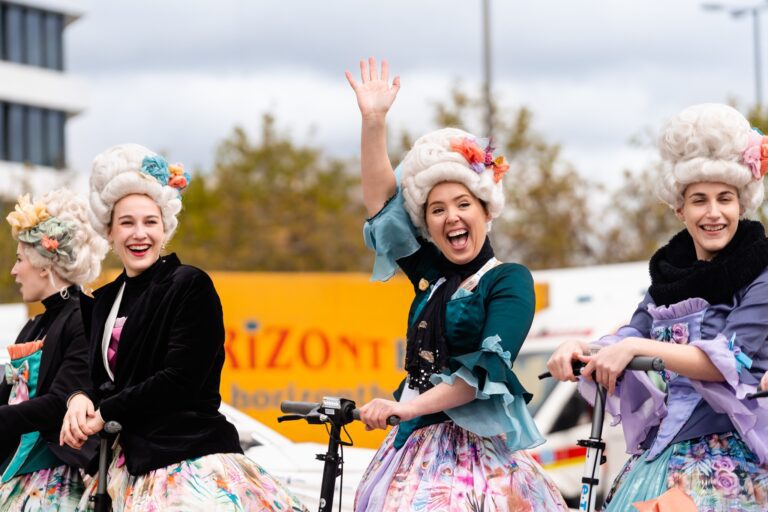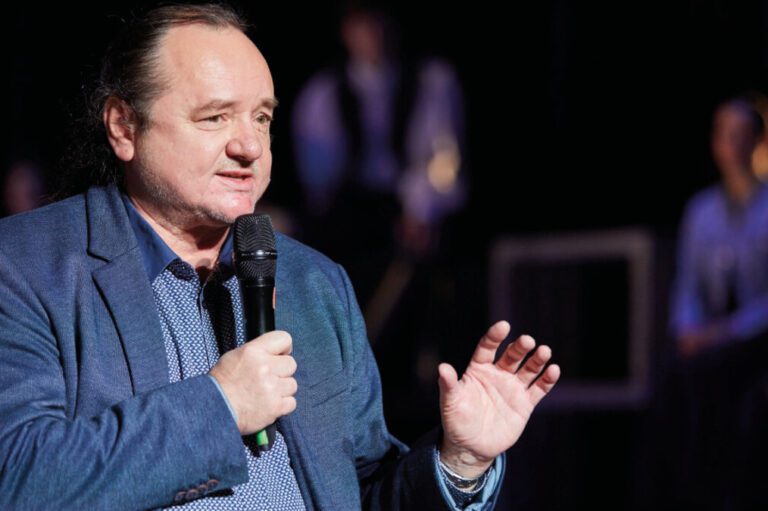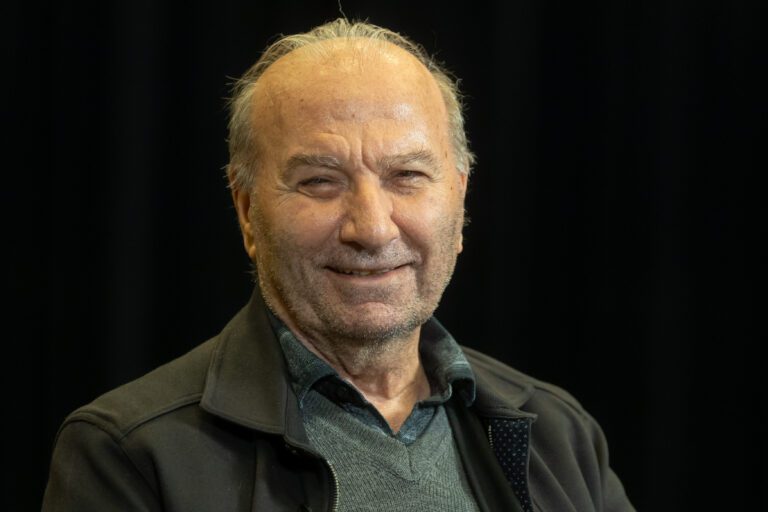The program of the 10th-anniversary edition of the Madách International Theatre Meeting (MITEM) included an entire festival – Synergy World Theatre Festival – in its “theatre embrace”. Within the framework of this event, Budapest has brought notable theatre productions from different years, united by the theme of linguistic and ethnic minorities.
Leaning Church, directed by Radovan Lipus, is a production of the Czech theatre Těšínské divadlo in Český Těšín, a unique theatre where two ensembles performing repertoire in both Czech and Polish languages meet.
Karin Lednická’s novel is in perfect harmony with the super-task of this theatre. The novel is partly about the Czech-Polish conflicts that arose after the collapse of Austria-Hungary. The play, however, focuses on universal human manifestations and destinies, as well as the human ability to withstand difficult situations, rather than primary national manifestations and grievances.
The predominant color of the performance is black. The light of miners’ lanterns illuminates separate fragments from the mosaic of one town’s fate. Coal was once the glory of this town. A century later, it also led to its decline. Nothing remains of its former prosperity and respectable buildings. The tilted, shriveled church reminds sullenly and reproachfully of the events of the past. Church św. Piotra z Alkantary and the Karwina cemetery, where 235 victims of the explosion at the Franciszka mine and later at the Jan-Karol and Głęboki mines are buried. Miners’ widows and orphans, small people against the backdrop of great grief are the heroes of the novel and the play based on it.
While watching this play, you catch yourself with horror at the thought that it is based not on the author’s artistic imagination, but on real events. It’s a very cinematic production and story (there will probably be a film version of the trilogy as well), which is essentially a documentary story. Even in the abridged theatre version, which contains fewer details than the detailed novel, it manages to convey a lot to the audience thanks to the actor’s existence not acting out the story as a play, but telling it. It is no coincidence that the Jantar Award-winning play also features a narrator character (Jan Monczka). In essence, it is a spectator’s tour through the pages of one city and its inhabitants, who have had to endure too much. But history, including the present day, teaches that “too much” is never too much.
